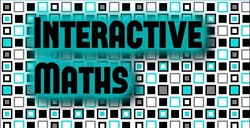|
I have just finished reading A Compendium of Mathematical Methods by Jo Morgan. It is a book directed at Maths teachers and has a simple purpose: sharing different methods that are used to perform some common processes that we teach. For each of 19 topics, spanning the whole of secondary maths, Jo goes into depth on a variety of methods, always using 2 well chosen examples to show some of the subtleties you might otherwise miss. Accompanying this are some of her own notes, and excerpts from historical textbooks to show how these were approached in the past. Jo stays neutral throughout the book, never saying one method is the best, but rather presenting them as they are. A few concerns about some methods which rely on following a procedure rather than developing understanding are raised, but not in a judgemental way. The tone throughout is one of trying to start a conversation about mathematical methods. When we come out of lockdown, I am going to take some of the chapters to my department to discuss. I think it is a great idea to talk about the merits of different methods, and looking at ones we don't use will help teachers develop their own subject knowledge too. I am also a fan of being consistent across the department in the main method we teach. I think this has benefits when students change teachers, and allows for more continuity. As we are a 3-18 all through school, we could even extend this to the primary school to discuss how we teach the foundation skills. In terms of sharing methods with students, it is also nice to have a few other methods "up your sleeve" for those situations when they do not understand the primary one you use. Or with those who need an extra push, asking them to see if they can understand why different methods are actually the same can push their understanding. Perhaps using a method comparison example like Emma McCrea discusses in Making Every Maths Lesson Count could be used. One thing that the book has made very clear to me is that we need to move to an area model of multiplication. It is a versatile and easy to understand method for multiplication, that can easily be extended to more complex topics such as algebraic expansion and factorising. I will be taking this to our department soon as I think this is something we should be consistent about. It is a great read for any Maths teacher. It is not something that you need to read in one go, and perhaps is better read by chapter when you want to look at a particular topic. And I am with Jo. Let's talk about methods.
1 Comment
|
Dan Rodriguez-Clark
I am a maths teacher looking to share good ideas for use in the classroom, with a current interest in integrating educational research into my practice. Categories
All
Archives
August 2021
|
|
Indices and Activities
|
Sister Sites
|
©2012-2023 Daniel Rodriguez-Clark
All rights reserved |
 RSS Feed
RSS Feed
